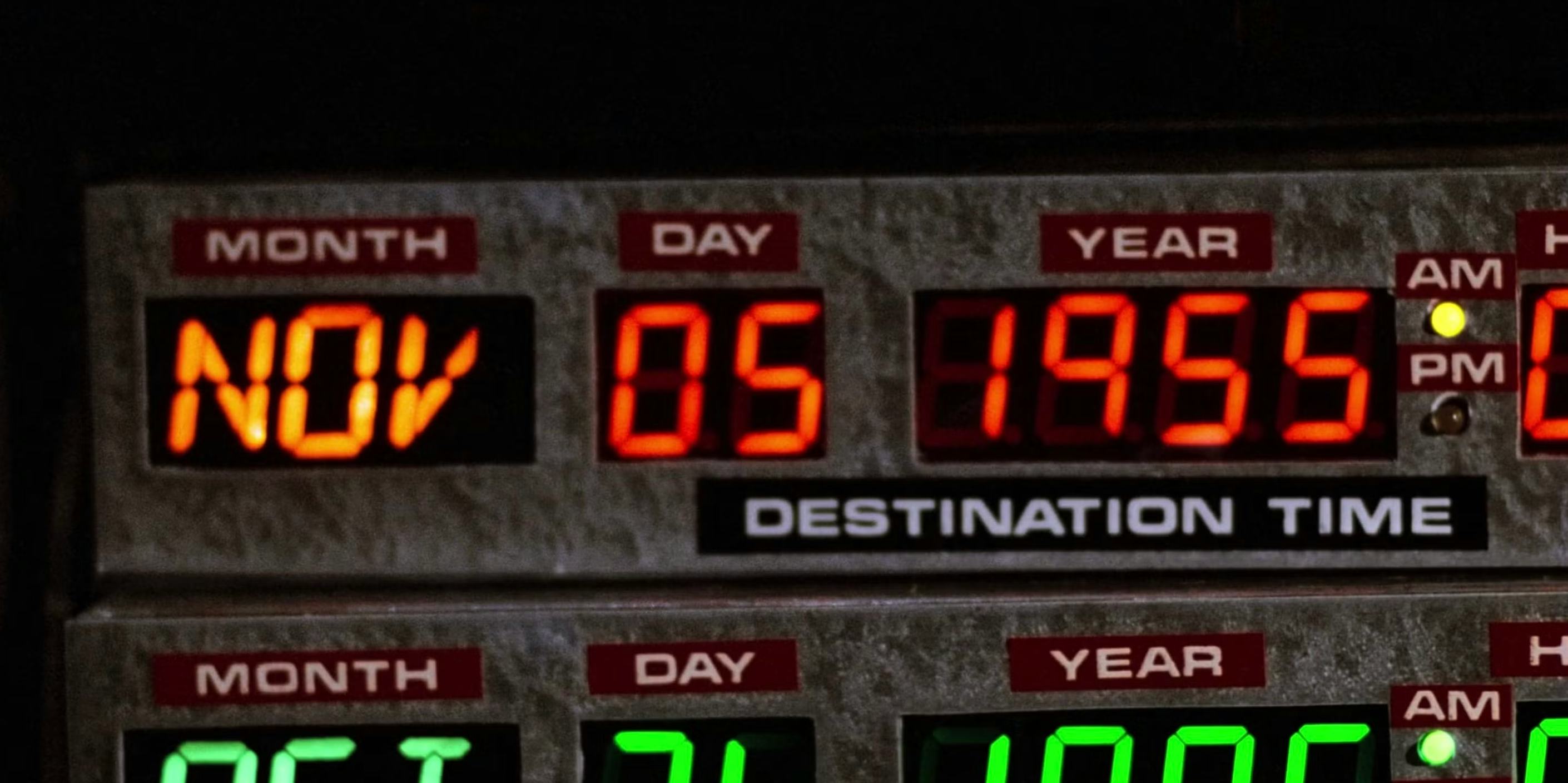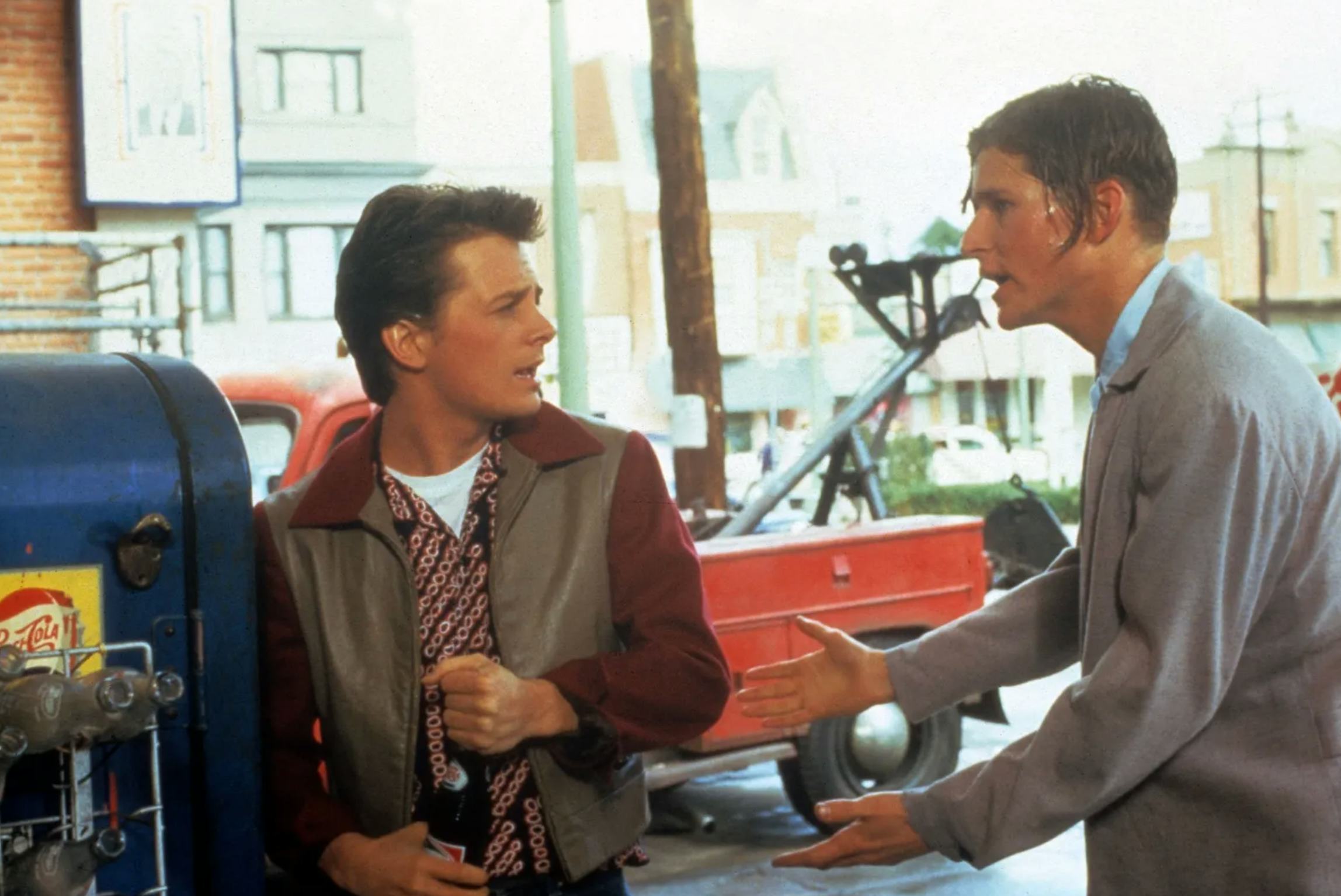
As he sits in the driver’s seat of his time-traveling DeLorean, Doc Brown (Christopher Lloyd) can barely contain his excitement. Thanks to his flux capacitor — the key component of a working time machine — Doc’s got all of human history at his fingertips. Of all the destination dates he could choose, however, the zany inventor goes with November 5, 1955, “a red-letter date in the history of science,” he explains to his young assistant, Marty McFly (Michael J. Fox). “That was the day I invented time travel.”
Inspired by a mental picture of the flux capacitor conjured by his incredible brain, Doc devoted his entire life to making that dream a reality. “It’s taken me almost 30 years and my entire family fortune to realize the vision of that day.” His tone is whimsical, and the device is magical, attached to a flying car with gull-wing doors. Yet its effectiveness is never in question since it lets the viewer ride with Marty as he attempts to set the past right to ensure his future.
As much as Back to the Future is a seminal sci-fi movie, it’s also a wish-fulfillment fantasy that cleverly reveals the dark side of nostalgia. Doc Brown, Marty, and the audience all have a certain vision of what November 5, 1955 should look like, but it soon becomes clear that the past is not what it used to be.

At first, Marty isn’t trying to change anything. He’s just trying to escape some terrorists who are hot on his tail with a bazooka in the Twin Pines Mall parking lot, circa 1985. But when he hits 88 miles per hour in the DeLorean, it triggers Doc’s time machine, sending Marty back to 1955 when his parents first met — because that’s the year Doc preset on the machine, of course. Marty’s presence soon upsets the timestream, throwing off their first meeting so the young version of his mother, Lorraine (Lea Thompson), falls for him instead of his father, George (Crispin Glover).
Marty spends the rest of the movie trying to keep his own existence and that of his siblings from being erased from history. For him, time travel isn’t about saving the world or significantly altering the course of history. His character motivations are more personal and relatable, grounded in a wish to undo the damage he’s caused and save his family and friends. That includes Doc, who the terrorists murdered outside JC Penney before Marty’s time jump.

In Back to the Future, we get a view of the 1950s that’s both nostalgic and biting. At first, we’re treated to a vision of the past that’s far superior to the ‘80s that Marty comes from, but it soon becomes clear that life in 1955 is no better than 1985. It might be worse. Marty’s dad is a sniveling coward and his mom is a high school student who drinks and smokes. Bullies still exist in this era, too.
In 1955, Marty’s father, George, is afraid of Lorraine rejecting him, and he’s afraid to stand up to high-school bully Biff Tannen (Thomas F. Wilson), who repeatedly humiliates him. Giving his dad a pep talk to inspire self-confidence, Marty tells George, “If you put your mind to it, you can accomplish anything.”

Marty starts Back to the Future out alone in Doc’s lab, plugging an electric guitar into the world’s biggest amplifier. He’s got his denim jacket, Nikey high-tops, and skateboard — all the necessary fashion accessories to make an ‘80s kid cool. Despite this, he and his band quickly fail their school audition, with Huey Lewis himself rejecting him through a megaphone before he even sings one line of “The Power of Love.” By the end, time travel solves everything, as Marty not only attains his dream of taking the stage but also invents rock ‘n’ roll.
Chuck Berry might like a word about that, not to mention Goldie Wilson, whose future success as mayor is attributed to Marty. Suffice it to say, not everything in Back to the Future has aged well, but like any movie, it’s a product of its time. Beneath all the product placement and goofy old-age makeup is an underlying theme about steering one’s destiny even when that seems impossible. That’s what November 5th and Doc’s flux capacitor represent. They’re him conceiving and achieving a lifelong dream while giving the viewer the means to vicariously experience something similar in the span of two hours.







